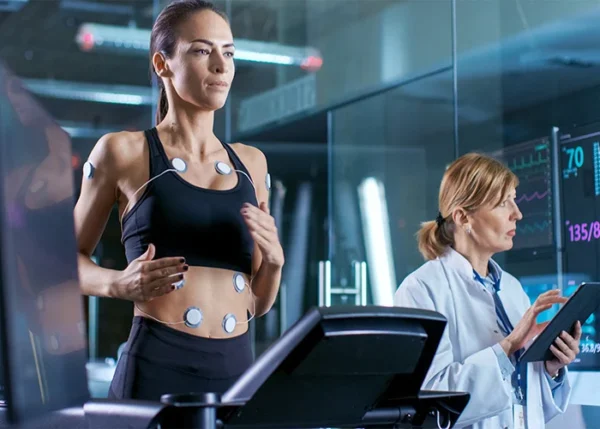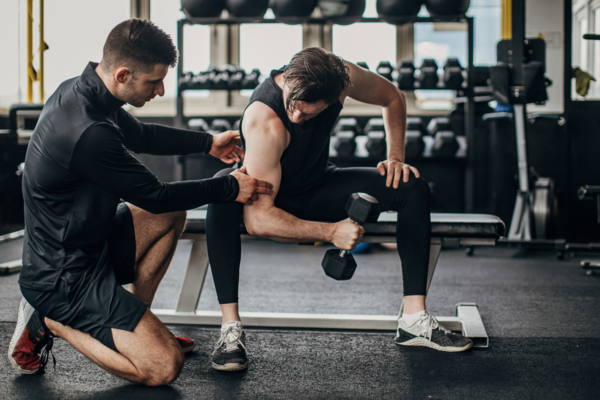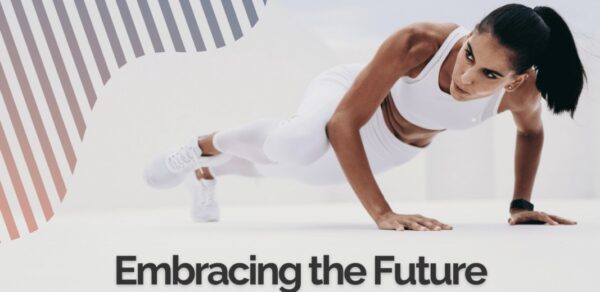
In a world where digital connectivity is both a necessity and a potential source of overwhelm, the concept of a digital detox is undergoing a profound transformation. What was once perceived as an extreme or ostracizing practice is evolving into a mainstream and balanced approach to well-being in 2024. This blog post explores the shifting perceptions surrounding digital detoxes, the driving forces behind this evolution, and why disconnecting from the digital realm is becoming a vital aspect of holistic self-care.
The Digital Dilemma
As our lives become increasingly intertwined with technology, the need for periodic disconnection has never been more apparent. The constant barrage of notifications, social media updates, and digital demands has led to a collective sense of digital fatigue. Recognizing the impact on mental health, relationships, and overall well-being, individuals are seeking reprieve from the digital deluge.
The Stigma of Disconnecting: A Shift in Perception
There was a time when taking a break from digital devices might have been met with skepticism or perceived as an antisocial act. However, the narrative is changing. In 2024, the stigma associated with digital detoxes is dissipating, making room for a more empathetic understanding of the need for balance in our tech-infused lives. Disconnecting is no longer viewed as an act of isolation but as a deliberate and commendable choice for self-care.
The Mental Health Imperative
The pervasive nature of digital connectivity has underscored the importance of safeguarding mental health. Digital detoxes are increasingly recognized as essential for combating digital burnout, reducing stress, and fostering a sense of mental clarity. As mental health takes center stage in societal conversations, the idea of stepping back from digital distractions is gaining legitimacy as a proactive measure for well-being.
Reclaiming Presence: Disconnecting to Connect
The paradox of our hyper-connected age is that, at times, we feel more disconnected than ever. Digital detoxes are emerging as a remedy, offering individuals the opportunity to reclaim presence in their lives. Whether it’s spending quality time with loved ones, engaging in outdoor activities, or simply relishing moments of solitude, disconnecting from the digital realm allows for a more authentic and meaningful connection with the world around us.
Balancing the Digital Diet: A Holistic Approach
The evolving perspective on digital detoxes is rooted in the recognition that balance is key. Rather than an all-or-nothing approach, individuals are adopting a more nuanced and holistic view of their digital consumption. It’s about curating a healthy digital diet that aligns with individual needs, allowing for intentional use without sacrificing well-being.
A Digital Renaissance
In 2024, the evolution of digital detoxes signifies a broader cultural shift—a renaissance in our relationship with technology. Disconnecting is no longer seen as an extreme measure but as a conscious and empowering choice. As individuals navigate the digital landscape with greater mindfulness, the concept of a digital detox becomes a tool for reestablishing balance, fostering well-being, and reclaiming a sense of agency over our digital lives. In the pursuit of a harmonious coexistence with technology, the digital detox has found its place not as an outlier but as an integral component of a holistic and mindful approach to modern living.

In the realm of unconventional wellness practices, the Wim Hof Breathing Method stands out as a powerful and transformative technique that has gained widespread attention. Developed by the Dutch extreme athlete Wim Hof, this breathing method combines specific breathing patterns, cold exposure, and meditation to unlock a range of physical and mental benefits. In this blog post, we’ll delve into the details of the Wim Hof Breathing Method, exploring how it works and the potential benefits it offers.
Understanding the Wim Hof Breathing Method:
At its core, the Wim Hof Breathing Method involves a series of deep, rhythmic breaths followed by a period of breath retention. The technique typically consists of three main phases:
- Breathing Exercise:
– Find a comfortable space to sit or lie down.
– Inhale deeply through the nose, filling the lungs with air.
– Exhale forcefully and completely through the mouth.
– Repeat this cycle for about 30 breaths.
- Retention Phase:
– After the final exhalation, take a deep breath in and let it out completely.
– Hold your breath for as long as you can comfortably manage.
– When you feel the urge to breathe again, take a deep breath and hold it for 15 seconds.
– Exhale and resume normal breathing.
- Cold Exposure:
– Incorporating cold exposure, such as ice baths or cold showers, is a key component of the Wim Hof Method.
– The cold exposure is believed to enhance the benefits of the breathing exercises, promoting improved circulation, reduced inflammation, and increased resilience.
How It Works:
The Wim Hof Breathing Method is based on the principles of controlled hyperventilation and conscious breath retention. The deep, rhythmic breathing helps to oxygenate the body, alkalize the blood, and activate the parasympathetic nervous system. This, in turn, can lead to a range of physiological and psychological effects, including:
- **Increased Energy Levels:**
– The enhanced oxygen intake may boost energy levels and reduce feelings of fatigue.
- Improved Immune Function:
– Wim Hof’s method has been associated with improvements in immune function, possibly due to reduced inflammation and increased production of anti-inflammatory cytokines.
- Enhanced Mental Clarity:
– Practitioners often report improved focus, concentration, and mental clarity after engaging in the breathing exercises.
- Stress Reduction:
– The method activates the parasympathetic nervous system, promoting relaxation and reducing stress levels.
- Mind-Body Connection:
– The combination of breathwork, cold exposure, and meditation fosters a stronger mind-body connection, empowering individuals to better regulate their responses to various stressors.
Conclusion:
While the Wim Hof Breathing Method has garnered considerable following and anecdotal evidence of its benefits, it’s essential to approach it with an understanding of individual variations and potential contraindications. Individuals with certain medical conditions should consult with healthcare professionals before incorporating the method into their routine.
Whether you’re seeking increased vitality, improved mental resilience, or a holistic approach to well-being, the Wim Hof Breathing Method offers a unique and accessible avenue to explore. As with any wellness practice, consistency and mindfulness are key, allowing individuals to discover the transformative potential within their own breath.
Valentine’s Day is synonymous with indulgent treats and decadent meals, but who says you can’t celebrate love while nourishing your body?
This year, embark on a culinary journey that embraces both romance and well-being with these delightful and healthy recipes. Show your love through delicious, nutrient-packed dishes that will leave both your heart and taste buds content.
Grilled Salmon with Lemon-Dill Sauce
Start your romantic dinner with a heart-healthy choice. Grilled salmon is rich in omega-3 fatty acids, while the zesty lemon-dill sauce adds a burst of flavor. Serve it with a side of quinoa and steamed vegetables for a well-balanced, nutrient-dense meal.
Caprese Stuffed Avocados
Elevate the classic Caprese salad by turning it into a visually stunning and nutrient-packed dish. Stuff ripe avocados with cherry tomatoes, fresh mozzarella, and basil. Drizzle with a balsamic glaze for a taste of indulgence without compromising on health.
Zucchini Noodles with Pesto and Cherry Tomatoes
Embrace the trend of vegetable noodles with this light and flavorful dish. Spiralize zucchini into noodles and toss them with a vibrant pesto sauce. Add cherry tomatoes for a burst of sweetness, creating a low-carb, high-flavor option that’s perfect for a romantic evening.
Balsamic Glazed Chicken with Roasted Vegetables
Impress your loved one with a succulent balsamic glazed chicken accompanied by a medley of roasted vegetables. The balsamic glaze adds a touch of sweetness, while the colorful vegetables provide an array of essential nutrients. It’s a dish that marries taste and health effortlessly.
Chocolate-Dipped Strawberries
No Valentine’s Day is complete without a touch of chocolate. Opt for a healthier dessert by dipping fresh strawberries in dark chocolate. Dark chocolate is rich in antioxidants and, when paired with the juiciness of strawberries, creates a guilt-free indulgence.
Mango Avocado Salsa with Grilled Chicken
Bring a tropical twist to your Valentine’s Day dinner with a refreshing mango avocado salsa. Top grilled chicken with this vibrant salsa for a combination that is not only visually appealing but also a delightful blend of sweet and savory flavors.
Chia Seed Pudding Parfait
End your romantic meal on a healthy note with a chia seed pudding parfait. Layer chia seed pudding with fresh berries and a dollop of Greek yogurt. This dessert is not only delicious but also a great source of fiber and protein.
This Valentine’s Day, treat your loved one to a romantic feast that not only ignites the senses but also nurtures your well-being. These healthy recipes showcase that love can be both delicious and nutritious. Celebrate the joy of good food, good health, and the company of your special someone on this day dedicated to love and connection.

Valentine’s Day beckons, and what better way to celebrate love than by intertwining romance with wellness and fitness? This year, transcend the conventional dinner date and indulge in activities that not only deepen your connection but also promote well-being. Discover a harmonious blend of romance and health with these unique Valentine’s Day ideas.
1. Sunset Wellness Picnic
Combine the serenity of nature with wellness by opting for a sunset wellness picnic. Choose a picturesque setting and pack a basket filled with wholesome, nutritious treats. Engage in heart-opening yoga poses together as you bask in the warm glow of the setting sun.
2. Culinary Wellness Experience
Embark on a journey of culinary delight with a private cooking class focused on healthy, nourishing cuisine. Explore recipes that not only tantalize your taste buds but also contribute to your overall well-being. It’s a bonding experience that aligns with both love and health.
3. Celestial Stargazing Yoga
Elevate your connection to the cosmos with a celestial stargazing and yoga adventure. Head to a serene location, lay out your yoga mats, and engage in gentle yoga poses under the starlit sky. This mindful experience fosters a connection between body, mind, and the universe.
4. Wellness Spa Night at Home
Transform your home into a haven of relaxation with a wellness spa night. Indulge in self-care activities like massages, DIY face masks using natural ingredients, and unwind with calming essential oils. It’s a rejuvenating experience that nurtures both your relationship and well-being.
5. Artistic Fitness Fusion
Combine creativity and fitness with an artistic fitness fusion night. Opt for a couples’ dance class, expressing yourselves through movement and music. This unique combination of art and physical activity adds a playful touch to your celebration.
6. Adventure-Fueled Outdoor Fitness
If you’re an adventurous couple, opt for an outdoor fitness activity such as hiking, biking, or even a couples’ workout session in a scenic location. The endorphin rush from physical activity enhances your well-being while creating lasting memories.
7. Wellness Cinema Under the Stars
Craft a wellness-infused movie night under the stars. Choose films that inspire healthy living or incorporate wellness themes. Snuggle up under blankets and indulge in nutritious snacks for a cozy yet health-conscious cinematic experience.
Conclusion:
This Valentine’s Day, transcend the ordinary and merge the realms of love, wellness, and fitness. From wellness picnics to celestial stargazing yoga, these activities promise a celebration that not only strengthens your bond but also nurtures your well-being. Embrace the holistic essence of your relationship and make this Valentine’s Day a chapter in your love story that radiates health, happiness, and lasting memories.

In a world driven by innovation and a relentless pursuit of optimal well-being, the concept of biohacking is steadily making its way into the mainstream. Once confined to the realms of Silicon Valley and scientific laboratories, biohacking is now emerging as a household term, poised to redefine how we approach health and performance.
Biohacking, at its core, is the art and science of optimizing one’s biology for peak performance. It encompasses a diverse range of practices, from personalized nutrition and sleep optimization to wearable technology and genetic testing. As we navigate the ever-evolving landscape of wellness, the gradual integration of biohacking into mainstream consciousness prompts us to consider: Are we on the brink of a paradigm shift in how we view and manage our health?
The allure of biohacking lies in its individualized approach, acknowledging that each person’s biology is unique. As more people recognize the potential to unlock their full potential through tailored interventions, biohacking transcends its niche origins, becoming a catalyst for a broader movement towards proactive health optimization.
In 2024, biohacking isn’t just a buzzword; it’s a transformative force shaping the future of personalized well-being, where the intersection of science and everyday life empowers individuals to become architects of their own vitality.
In a world that is constantly evolving, so too are our approaches to fitness. Virtual workouts have emerged as a dynamic force, steadily gaining popularity in recent years, and all signs point to this trend continuing to thrive in 2024. The allure of virtual workouts lies in their convenience, affordability, and personalized nature, offering a revolutionary way to stay fit without the constraints of a traditional gym setting.
Convenience Redefined
One of the primary draws of virtual workouts is the unparalleled convenience they offer. No longer bound by the constraints of time or location, fitness enthusiasts can engage in effective workouts from the comfort of their homes or any location that suits them. The flexibility of virtual workouts caters to busy schedules, making it easier for individuals to seamlessly integrate exercise into their daily routines.
Affordability at its Core
The financial barriers that often accompany traditional gym memberships become a thing of the past with virtual workouts. The affordability of these programs makes fitness accessible to a broader demographic, leveling the playing field and empowering individuals from various walks of life to prioritize their health and well-being without breaking the bank.
Tailored to Individual Needs
Virtual workouts stand out for their ability to be customized to individual needs and preferences. Whether you’re a seasoned fitness enthusiast or a beginner taking your first steps on the wellness journey, virtual workouts provide a diverse range of programs that cater to different fitness levels, goals, and preferences. The ability to tailor workouts ensures that each session is not just effective but also enjoyable, enhancing the overall fitness experience.
The Future of Fitness in 2024
As we look ahead to 2024, the trajectory of virtual workouts appears poised for continued growth and innovation. Technological advancements, coupled with an increasing emphasis on personalized fitness experiences, will likely shape the future of virtual workouts. From interactive live sessions to immersive virtual reality workouts, the possibilities are vast, promising an exciting evolution in how we approach fitness.
Conclusion
Virtual workouts have undeniably become a cornerstone of the modern fitness landscape. With their unmatched convenience, affordability, and personalized approach, they have transformed the way we view and engage in exercise. As we step into 2024, the virtual fitness revolution shows no signs of slowing down, offering a fitness frontier that is inclusive, adaptable, and tailored to the unique needs of each individual.
In this era of virtual fitness, the Optimized Humans Fitness App stands out as a beacon of personalized training excellence. The app, coupled with expert trainers, seamlessly integrates the benefits of virtual workouts with a personalized touch. Through a diverse array of customizable programs, interactive live sessions, and real-time guidance from experienced trainers, the Optimized Humans Fitness App ensures that your fitness journey is not just virtual but uniquely yours. It’s the perfect answer to the evolving landscape of virtual training, where technology and personalization converge to deliver an unparalleled fitness experience. Embrace the future of fitness with the Optimized Humans Fitness App—an innovative solution that brings the gym to you, tailoring workouts to your individual needs and goals, making fitness both effective and enjoyable.
In a world where the pursuit of well-being often revolves around numbers—reps, sets, calories burned—it’s time to redefine our understanding of fitness. Welcome to the era where fitness transcends the mundane and transforms into an immersive experience. This blog explores the paradigm shift towards viewing fitness not just as a routine but as a journey—a holistic, sensorial, and deeply personal experience that goes beyond the confines of the gym.
The Evolution of Fitness: From Routine to Ritual
Gone are the days when fitness was a mere checklist of exercises. The contemporary approach embraces fitness as a ritual—a purposeful and dynamic experience that extends beyond the walls of a gym. It’s about intentional movement, mindful choices, and the integration of well-being into the fabric of daily life.
Mindfulness in Motion: The Present Moment Workout
The concept of mindfulness is seeping into every aspect of our lives, and fitness is no exception. The present moment workout is about immersing oneself fully into the exercise—feeling the muscles engage, savoring each breath, and relishing the rhythm of movement. In this experience-driven fitness journey, mindfulness becomes the guiding force, fostering a deeper connection between the mind and body.
Bridging Fitness and Fun: The Playful Workout
The rise of experiential fitness brings an element of playfulness to the workout routine. From dance-inspired classes to obstacle course challenges, fitness becomes an adventure—an opportunity to play, explore, and rediscover the joy of movement. This shift acknowledges that exercise doesn’t have to be a chore; it can be an exhilarating and enjoyable experience.
The Sensorial Gym Experience: Engaging the Senses
Experiential fitness engages all the senses, creating a sensorial symphony that elevates the workout experience. Whether it’s the aroma of essential oils in a yoga studio, the rhythmic beats of a curated playlist, or the tactile sensation of outdoor trail running, fitness becomes a multisensory journey that enlivens the spirit.
Community Connection: Social Fitness Experiences
Fitness is no longer a solitary pursuit; it’s a communal experience. The emergence of group workouts, fitness events, and online communities fosters a sense of connection and shared purpose. The social aspect of fitness becomes a driving force, transforming it from an individual endeavor into a collective journey.
The Wellness Fusion: Blurring Boundaries
Experiential fitness blurs the boundaries between traditional wellness practices. It’s not just about lifting weights or running miles; it’s about embracing a holistic approach that includes yoga, meditation, and nutritional mindfulness. The fusion of wellness practices creates a comprehensive and integrated experience that nurtures the body, mind, and soul.
Embarking on Your Fitness Odyssey
As we embrace the concept of fitness as an experience, it’s an invitation to embark on a personal odyssey—one that transcends the rigid confines of routine and embraces the dynamic, the mindful, and the joyful. Whether you find solace in the rhythmic flow of a dance class, the serenity of a yoga session, or the camaraderie of a group workout, remember that your fitness journey is uniquely yours. It’s a celebration of movement, an exploration of self, and a holistic experience that extends far beyond the parameters of sets and reps. So, lace up your sneakers, embrace the sensory richness of your workout, and let fitness become a transformative and joyous journey.


As we age, our bodies undergo a complex interplay of processes that contribute to the overall aging phenomenon. Scientists have identified twelve key mechanisms that play a role in this intricate process. Understanding these mechanisms and adopting healthy lifestyle strategies can potentially mitigate their effects and promote healthier aging.
Let’s dive deeper into each mechanism of aging and explore some healthy strategies that might help combat these issues:
- Genomic Instability: This refers to damage in DNA, which can lead to mutations and cellular dysfunction. To mitigate this, a healthy lifestyle involving a balanced diet, regular exercise, and minimizing exposure to harmful environmental factors like radiation and toxins can be beneficial. Antioxidants found in fruits and vegetables might help reduce DNA damage by neutralizing free radicals.
- Telomere Attrition: Protecting telomeres is crucial. Lifestyle habits that support telomere health include managing stress through meditation or mindfulness, regular exercise, and consuming a diet rich in antioxidants and omega-3 fatty acids. Some studies suggest that activities like yoga and meditation may positively impact telomere length.
- Epigenetic Alterations: Maintaining a healthy lifestyle with proper nutrition, exercise, and stress management can positively influence gene expression. Additionally, some research suggests that certain foods, like those rich in folate and other methyl-donating compounds, might help maintain healthy epigenetic patterns.
- Loss of Proteostasis: Regular exercise and a balanced diet can support the body’s ability to maintain proper protein structure and function. Including protein-rich foods, maintaining hydration, and managing chronic inflammation can also aid in proteostasis.
- Deregulated Nutrient Sensing: Caloric restriction and intermittent fasting have been linked to improved nutrient sensing pathways. Consuming a balanced diet and maintaining a healthy weight can also help regulate nutrient sensing mechanisms.
- Mitochondrial Dysfunction: Regular exercise has been shown to improve mitochondrial function. Additionally, consuming a diet rich in antioxidants and nutrients that support mitochondrial health (such as coenzyme Q10, found in nuts and seeds) might be beneficial.
- Cellular Senescence: While currently, there’s no direct way to eliminate senescent cells, maintaining a healthy lifestyle can delay their accumulation. Regular exercise and consuming anti-inflammatory foods may help mitigate cellular senescence.
- Stem Cell Exhaustion: Exercise has been shown to increase the number and activity of stem cells. Additionally, certain dietary components, like resveratrol found in red grapes, might support stem cell health.
- Altered Intercellular Communication: Consuming a diet rich in anti-inflammatory foods and maintaining a healthy weight can support proper intercellular communication. Regular exercise has also been linked to improved cell signaling.
- Dysregulated Nutrient Sensing: Similar to deregulated nutrient sensing, strategies like caloric restriction and intermittent fasting may help regulate nutrient sensing pathways. Consuming a balanced diet with adequate nutrients also supports healthy nutrient sensing.
- Accumulation of Senescent Cells: Research is ongoing to find ways to eliminate senescent cells. While direct methods are still developing, lifestyle habits like regular exercise and a healthy diet might help delay the accumulation of these cells.
Conclusion
While these strategies show promise in supporting healthy aging, it’s important to remember that aging is a complex process. Consulting healthcare professionals before making significant lifestyle changes is advisable. By understanding these mechanisms and adopting healthy habits, we can potentially positively influence the aging process and lead healthier lives.
Remember, aging is a natural process, but adopting a healthy lifestyle can significantly impact how we age and the quality of our later years.
As we embark on the journey through 2024, one fitness trend stands tall, promising not just to endure but to thrive—strength training. While it has long been a staple in the realm of fitness, the projections for 2024 suggest a surge in its popularity. What propels this enduring fascination with lifting weights and resistance training, and why is strength training expected to claim an even more prominent spot in the fitness landscape this year?
The Unyielding Appeal of Strength
Strength training isn’t merely a passing fad; it’s a timeless pursuit grounded in the fundamental desire for vitality and resilience. The anticipation for its heightened popularity in 2024 prompts a contemplation: Is it the simplicity and efficacy of lifting weights that draws individuals in, or is there something deeper, something inherently satisfying about witnessing one’s physical strength evolve?
Beyond Muscles: The Holistic Benefits
The growing recognition of strength training’s myriad benefits contributes to its rising acclaim. It’s not just about sculpting muscles; it’s about enhancing overall health. Improved bone density, increased muscle mass, and better cardiovascular health are outcomes that resonate with a generation increasingly mindful of holistic well-being. The question arises: In a fitness landscape teeming with options, does strength training stand out as a foundational practice that transcends trends?
Versatility in Wellness
Strength training’s adaptability to various fitness goals further cements its relevance. Whether one’s aim is to lose weight, boost metabolism, or foster a resilient physique, strength training accommodates diverse aspirations. In an era where individuality in fitness pursuits is celebrated, the question lingers: Is strength training the common ground that unites the pursuit of varied wellness goals?
The Future of Fitness
As we delve into the heart of 2024, the resurgence of interest in strength training prompts contemplation about the future of fitness. Is this a reaffirmation of the timeless effectiveness of resistance training, or does it signal a deeper shift in our approach to physical well-being? Could it be that, in an age marked by technological advancements and ever-evolving fitness modalities, the simplicity and efficacy of strength training offer a grounding force that individuals seek?
Strength training, with its roots reaching back through the annals of fitness history, continues to captivate and evolve. The buzz surrounding its anticipated surge in popularity in 2024 invites us to reflect on the enduring appeal of lifting weights and the profound impact it has on our bodies, minds, and the very essence of our fitness journeys. As we navigate this year, one question resonates: Is strength training not just a trend but a steadfast companion in our pursuit of enduring health and vitality? Time will tell, and in the meantime, let the clink of weights be the soundtrack to a resilient and empowered year of fitness.
New Years Discount by Optimized Humans
To further ignite your fitness journey, Optimized Humans is offering an unprecedented 40% discount throughout the month of January. This exclusive offer ensures that you have access to top-notch coaching, personalized programs, and the revolutionary features of the app, all at an unbeatable value.
 As the new year unfolds, the promise of a fresh start beckons, making it the perfect time to embark on a transformative fitness journey. Imagine having the right coach, a personalized program, and a revolutionary app at your fingertips – Optimized Humans – to guide you toward achieving your yearly fitness goals. Here’s why commencing your fitness endeavors at the beginning of the year, with the aid of the right tools, is paramount to your success.
As the new year unfolds, the promise of a fresh start beckons, making it the perfect time to embark on a transformative fitness journey. Imagine having the right coach, a personalized program, and a revolutionary app at your fingertips – Optimized Humans – to guide you toward achieving your yearly fitness goals. Here’s why commencing your fitness endeavors at the beginning of the year, with the aid of the right tools, is paramount to your success.
Breaking the Post-Holiday Slump:
It’s no secret that the days between Christmas and New Year’s often become an excuse for many to slack off on their fitness routines – a time when indulging in extra treats and neglecting the gym seems all too tempting. However, understanding that fitness is a year-round commitment, involving continual adjustments and adaptations, sets the foundation for a healthier lifestyle.
Seize the Moment:
Rather than succumbing to the post-holiday lethargy, take charge of your well-being now. Integrate essential elements like training, nutrition, yoga classes, mobility sessions, and meditation into your routine. By doing so, you not only cultivate a holistic approach to fitness but also establish a solid foundation and accountability that will endure beyond the turn of the calendar.
Exclusive Deals to Propel You Forward:
To further ignite your fitness journey, Optimized Humans is offering an unprecedented 40% discount throughout the month of January. This exclusive offer ensures that you have access to top-notch coaching, personalized programs, and the revolutionary features of the app, all at an unbeatable value.
Conclusion:
Embarking on a fitness journey at the dawn of the year, coupled with the support of a skilled coach and a tailored program, sets the stage for a year of unprecedented success. With Optimized Humans providing the tools and guidance needed, there’s no better time to commit to your health and wellness goals. Seize the opportunity, show up, and let the transformative journey begin – because this year, your success story starts now.

